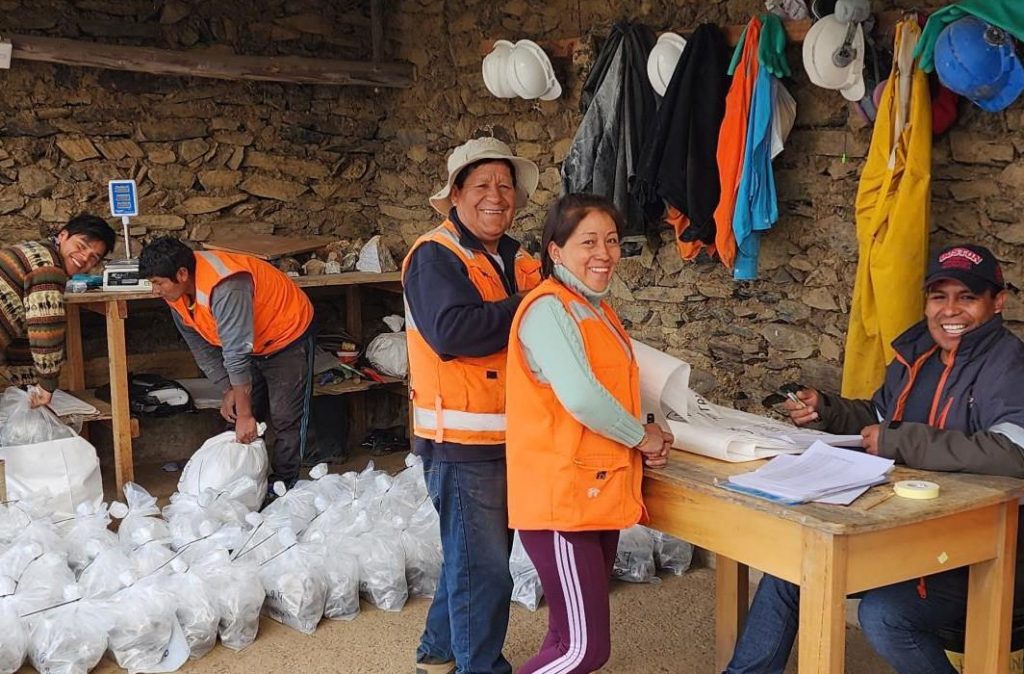DLP Resources drills 0.82% CuEq over 216.15 metres at Aurora, Peru

DLP Resources Inc. [TSXV-DLP; OTCQB-DLPRF] reported complete drill results for drill hole A24-016 on the Aurora porphyry copper-molybdenum-silver project in southern Peru. Results for the first 15 drill holes were last released between January 4 and July 16, 2024.
Highlights: Drill hole A24-016 was drilled off the same drill platform as A24-015 toward the northwest and intersected copper-molybdenum and silver mineralization throughout the hole to a depth of 1,080.15 metres. The top of the hole from 0 m to 89.00 m intersected 0.48% CuEq (copper equivalent) in mineralized hornfels and the lower 216.15 m (864 m to 1,080.15 m) intersected 0.82% CuEq in mineralized hornfels and early quartz-eye-feldspar-biotite porphyry.
A24-016 ended in molybdenum mineralization and the most significant mineralized intervals included 0.32% CuEq over 1080.15m (0.15% Cu (copper), 0.0318% Mo (molybdenum) and 1.41 g/t Ag (silver)) from 0.00 m to 1,080.15 m; 0.48% CuEq over 89.00 m (0.31% Cu, 0.0003% Mo and 20.03 g/t Ag) from 0.00 m to 89.00 m; 0.24% CuEq over 535.00 m (0.18% Cu, 0.0082% Mo and 1.75 g/t Ag) from 329.00 m to 864.00 m; 0.82% CuEq over 216.15 m (0.09% Cu, 0.1397% Mo and 0.62 g/t Ag) from 864.00 m to 1,080.15 m.
Gendall, president and CEO, commented: “A24-016 confirmed shallow copper mineralization in the eastern sector and we continue to expand the footprint of copper-molybdenum and silver mineralization at Aurora. Two drill rigs are currently drilling A24-017 and A24-018 in the northeast and southwest zones and we expect to extend copper-molybdenum mineralization in these areas. Results for A24-017 and A24-018 will be available for release in late September and early October.”
Aurora project is an advanced stage porphyry copper-molybdenum exploration project in the province of Calca, southeast Peru. The Aurora project was previously permitted for drilling in 2015 but was never executed. 13 historical drill holes, drilled in 2001 and 2005 totalling 3,900 m, were drilled over an area of approximately 1,000 m by 800 m, cut significant intervals of copper and molybdenum mineralization. From logging of the only three remaining holes, DDA-01, DDA-3A and DDA-3, and data now available, it appears that only three of the 13 holes tested the enriched copper zone and only one hole drilled deep enough to test the primary copper and molybdenum zone.
Salient historic drill hole data of the Aurora project are: 190 m at 0.57% Cu, 0.008% Mo in DDA-1 with a high-grade intercept of 20 m at 1.01% Cu related to a supergene enrichment zone of secondary chalcocite; 142 m at 0.5% Cu, 0.004% Mo in DDA-3; 71.7 m at 0.7% Cu, 0.007% Mo in DDA-3A.
One of the historical holes ABC-6 drilled on the edge of the system intersected 78 m at 0.45% Cu and 0.107% Mo.
A review of the historical drilling indicates that the majority of the 13 holes were drilled in the leached and partially leached zones of the porphyry system. Ten of the 13 holes never fully tested the oxide and secondary enrichment zone and/or the primary copper zone at depth encountered in DDA-01. Copper-molybdenum mineralization is hosted by quartz-feldspar porphyries intruded into slates-hornfels and pelitic sandstones belonging to the Ordovician (439 to 463 ma) Sandia formation.
